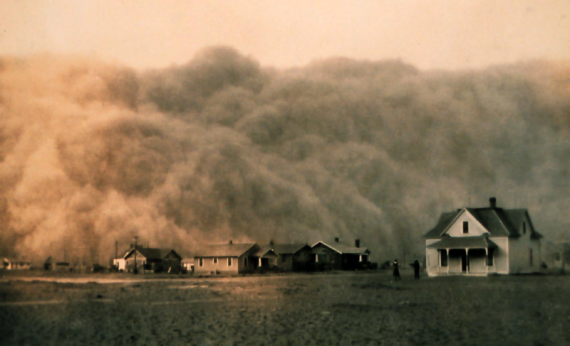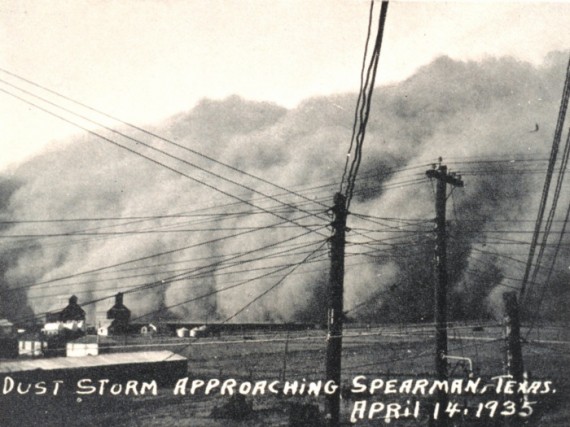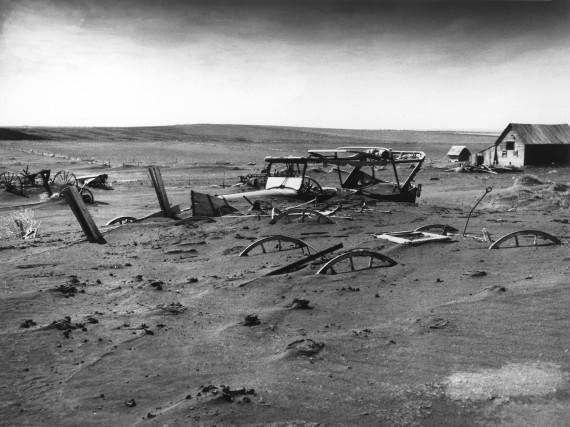A Texas dust storm in 1935
I was watching Ken Burns' PBS special "The Dust Bowl" and saw some pictures of these amazing storms rolling acorss the plains. The documentary was a bit dry, but full of interesting, and scary, stories about who the Dust Bowl came to be and how devastating it was. Here's some of what I learened.
Farming Techniques Helped Cause the Dust Storms
The PBS special does a great job of explaining in detail how farming techniques played such a key role in the increase in number and severity of the dust storms. Here's a good summary from Wikipedia:
"Black Sunday" — The Sky Went Black
April 14, 1935 was the day of the worst of the many dust storms of that year, and one of the worst ever. The Perrytown Pipeline gives a quick summary.
Black Sunday marked the turning point in the Federal Government's recognition of the soil erosion occurring in the Dust Bowl region, labeling it a "national menace." Hugh Bennett, considered the father of the soil conservation movement, had long tried to draw attention to the farmer's plight. Up to that point, he had been largely ignored, and the Dust Bowl was seen in the nation's capitol as just another facet of the depression. Already scheduled to deliver an address to Congress concerning the matter, he heard tales of the massive Black Sunday storm, spreading its dust towards the east. He stalled his report until the dust settled over Washington D.C. Upon its arrival, many of the Congressmen were horrified at the fine, powdery sand choking their throats and scratching their eyes. Using the moment to full effect, Bennett proclaimed "This, gentlemen, is what I've been talking about." On April 27th, 1935, the Soil Conservation Service (SCS) was created, and placed under the control of Bennett.
It Could Happen Again
Scientific America recently had an article outlining how the current drought could lead to another Dust Bowl if it conintues much longer:
A Clip from the Ken Burns' Special on the Black Blizzards
Watch The Dust Bowl: Black Blizzards on PBS. See more from The Dust Bowl.



Follow Us On